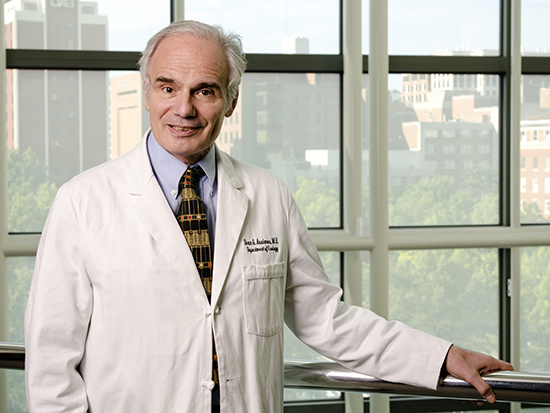Kidney stones get no respect — except from anyone who has ever had one. “Kidney stones are the Rodney Dangerfield of diseases,” said Dean Assimos, M.D., emeritus professor and founding chair of the Department of Urology at the UAB Heersink School of Medicine.
You will often hear that kidney stones are more painful than childbirth. That is debatable, although there is this 2017 study from the United Kingdom, in which 12 of 19 female patients who had experienced kidney stones and childbirth rated the stones higher. (Three thought the pain was similar, and four said childbirth was worse.) “They can be excruciating,” confirmed Assimos, who has had two kidney stones himself.
More people than ever are getting that experience. Between 1994 and 2012, the number of Americans with kidney stones nearly doubled. It has now reached one in 10 Americans, “and it is higher in the Southeast,” Assimos said. “About $10 billion a year is consumed taking care of patients with kidney stones and as a consequence of having these patients’ being taken out of the workforce because of the stones.”
Oxalate: a key factor in kidney stones
Kidney stones can have multiple causes, but the most common is an accumulation of crystalized oxalate. Oxalate in urine is derived from dietary sources or via the body making it — a process known as endogenous synthesis. Diet-derived oxalate usually binds with calcium in the intestines and leaves the body in the stool in the form of calcium oxalate crystals, Assimos explains. But when there is not enough calcium in the intestinal tract, more of the oxalate remains in its free or soluble form and is readily absorbed from the gut into the bloodstream. It winds up in the kidney, where it is excreted in urine. Oxalate then forms crystals with calcium that accumulates and lodges in the kidney as a stone. (Assimos compares it to how snowflakes stick together to form a snowball.) About 80 percent of kidney stones are composed of calcium oxalate stones, Assimos says. Once you have had one, you are quite likely to have more: The recurrence rate is as high as 50 percent within 10 years.
Assimos has spent his career studying how oxalate is made, handled and excreted by the body, and its effects on kidney stone formation. This work led to his selection for the 2023 Karl Storz Life Time Achievement Award from the Endourological Society for his contributions to the field of urology.
